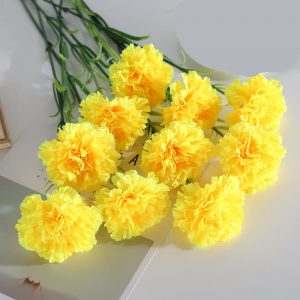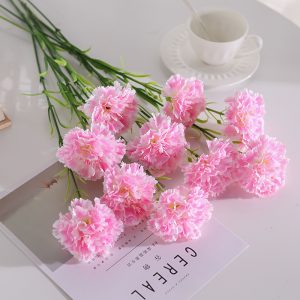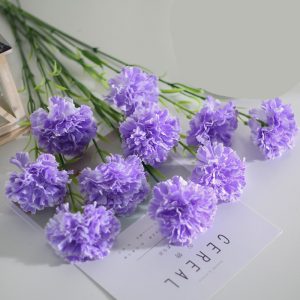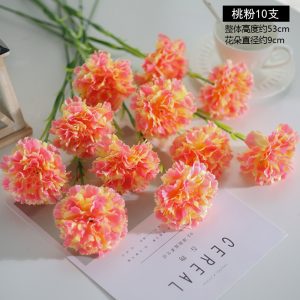



Product parameters
Height: 53cm
Flower diameter: 9cm
Material: crepe + plastic
Process: injection molding
Characteristics
The flowers are made of high-quality enamel, fine workmanship, full-scale three-dimensional, natural and realistic. Glue-feeling leaves, smart and realistic, soft and delicate, can be bent at will, in order to adapt to different utensils. Flowers and foliage are natural in color, high in color fastness, and difficult to fade.
Introduction
Carnation, Dianthus, Dianthus is a perennial herb, 40-70 cm high, whole plant hairless, pink green. Stems clumped, erect, base ligated, sparsely branched. The leaves are linear-lanceolate, with a apical acuminate tip, a slightly short sheath at the base, a prominent midrib, a concave upper surface, and a slightly convex lower surface. Flowers often solitary with aroma, pink, purplish red or white; pedicels shorter than calyx; broadly ovate, apically shortly lanceolate, calyx culate, calyx lanceolate, marginate membranous; petals obovate, apically not Nectified teeth; stamens up to throat; styles extending out of flowers. Capsule ovoid, slightly shorter than persistent. Flowering period from May to August, fruiting period from August to September.
Flower language
Carnations, most of which represent love, charm and respect, red represents love and care. The legend of pink carnation is that the Virgin Mary sees the tears of sadness that Jesus has suffered, and the carnation grows out of the place where the tears fall, so the pink carnation becomes a symbol of immortal maternal love. Different from roses, the love represented by carnations is relatively light and warm, suitable for describing the love of family, so the children give more carnations to their parents.
